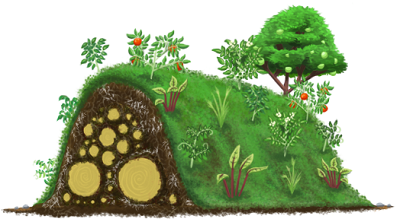






Burra Maluca wrote:A fellow member recently posted this in another thread...
I've been discussing recently the prospects for growing runner beans (one of my favourite vegetables) in Portugal. Most people think this is hopeless, because high temperatures mean runner bean pods won't set. I wonder whether, with stronger sunlight, runner beans might grow well in annual beds in the dappled shade and lower temperatures of a forest garden, thus also providing another nitrogen fixer. Maybe we could breed a variety that might work.
Well that was like a red rag to a bull, so I consulted my other half and we started to pull a few ideas together. He is the one who loves 'green beans', and this is his green bean seed collection ready for planting this year.
My other half suspects that the problem is that the taller stems are more susceptible to catching the sun. A bush plant is, literally, bushier, and shades the stem better. With longer stems they just don't seem to be able to get any growth. With the few stems that did survive, the bean set wasn't bad, it seems that the problem might be with the stems, not the set. But of course, that's just how he remembers it, and he's not sure which of the two possible species it was, and it obviously needs more experimentation.
Shade is a valuable and scarce commodity here in Portugal, and a forest garden might indeed be the way to go for growing runner beans. Or maybe it will turn out that only Phaseolus vulgaris is suitable and more breeding work will be needed for the coccineus species. I smell a project coming on...


Leon Elt wrote:Larry Korn teaches a free on-line PDC here ...permaculturedesigntraining

Alex Ojeda wrote:
paul wheaton wrote:And, of course, hugelkultur style raised bed gardens

I thought that pine was a bad thing in Hügelkultur. No? Should you use just one tree per mound or can you load it up?
